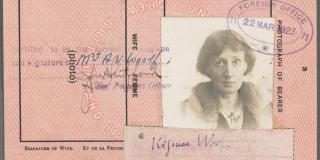
Section 2: Fiction
Stream of consciousness. Shifting perspectives. The expanse of time. The nature of gender. These are hallmarks of Woolf’s fiction, themes that she began to explore in her first published short story in 1917 and spent the next two and a half decades refining. Her work is also lyrical, which sometimes belies her experimental techniques. Together, these can make her fiction—which is not as aggressively intellectual as that of her contemporaries T.S. Eliot, James Joyce, and Gertrude Stein—challenging to access.
Beginning in 1922 with Jacob’s Room and continuing with Mrs. Dalloway (1925), To the Lighthouse (1927), Orlando (1928), and The Waves (1931), Woolf broke with conventional narrative techniques to more fully explore the inner lives of her characters. Although she drew heavily from life, she was careful to remove herself from her fiction. For her most experimental work, The Waves, she established that “this shall be Childhood; but it must not be my childhood.”






